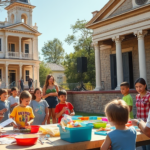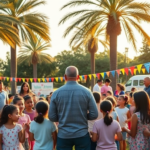Mission Releases Draft Budget for Public Comment
The city of Mission, Texas, has officially released a draft budget for the upcoming fiscal year, inviting residents of the Rio Grande Valley (RGV) to review and provide feedback. This initiative marks the city’s commitment to transparency and community involvement, addressing the pressing need for public participation in shaping Mission’s financial planning.
Overview of the Draft Budget
The proposed budget outlines substantial investments in infrastructure, public safety, and community services, reflecting the city’s priorities for improvement and development. With considerable allocations for road repairs, police and fire department upgrades, and enhanced community programs, the budget aims to address key issues impacting Valley residents.
City Manager Pedro Flores expressed optimism about the budget’s objectives. “This budget is crafted to meet the needs and aspirations of our community, emphasizing both immediate enhancements and long-term sustainability. We urge our residents to provide insights and engage in this critical process,” he stated.
Background and Context
Located in South Texas, Mission is part of the rapidly growing RGV, where economic development and urban expansion require strategic planning. In recent years, residents have expressed concerns about the adequacy of local infrastructure and public services amid increasing population demands.
Alex Martinez, a community activist and long-time resident, recognizes the importance of city planning. “Community-driven budgeting can make a difference,” he noted. “It empowers people to contribute to decisions impacting their neighborhoods and future.”
Local Impact on the Rio Grande Valley
The draft budget’s focus on infrastructure promises tangible benefits for Valley residents and businesses, contributing to an improved quality of life. Road maintenance and expansion projects are expected to ease traffic congestion and boost local commerce, while enhancements to public safety services aim to ensure a safer community environment.
Moreover, increased funding for community services, including recreational facilities and educational programs, highlights the city’s investment in the well-being and development of its younger population. Jessica Ramirez, a local school teacher, hopes this budget will positively impact her students. “Access to more recreational and learning opportunities can enrich the lives of our students and their families.”
Connecting with Ongoing Local Efforts
This budget draft resonates with ongoing efforts in the RGV to enhance civic engagement and economic growth. Local governments, nonprofits, and community members have been working collaboratively to create a more inclusive and vibrant region, with this budget aligning well with those initiatives.
Dr. Teresa Galvan, a regional planner at the University of Texas Rio Grande Valley, emphasized the significance of continuity in these efforts. “Building on existing frameworks while seeking innovative solutions is crucial for sustainable development. This budget echoes the region’s broader goals,” she explained.
Potential Future Implications
If adopted, the budget will pave the way for future projects, establishing a foundation for continued progress. It could inspire other cities within South Texas to adopt similar participatory budgeting processes, fostering a culture of transparency and community involvement across the region.
Nonetheless, there are concerns about funding adequacy and efficient allocation. Some skeptics worry about budget shortfalls or delayed project completion. Ensuring fiscal responsibility while meeting community needs remains a challenge for city officials.
Balancing Perspectives and Ensuring Inclusivity
To address varying opinions, the city has encouraged residents from all walks of life to share their views and proposals. Public forums and workshops are scheduled to facilitate discussions, empowering Valley residents to voice concerns or support for specific budget items.
Antonio Guzman, president of a local business association, highlights the importance of inclusivity. “All stakeholders, from local business owners to families and educators, should actively participate to shape a well-rounded and balanced budget.”
Resources and Community Involvement
Mission City Hall has set up an online portal where residents can access the draft budget and submit their feedback. Additionally, printed copies of the budget are available at local libraries and community centers, ensuring accessibility to all interested parties.
For those wishing to engage more directly, city officials have announced a series of public meetings where the budget will be discussed in detail. This open platform aims to demystify financial planning and invite productive dialogue between the city government and its constituents.
Conclusion
As Mission advances in its budgetary cycle, the active involvement of its citizens offers an opportunity to co-create a promising future. As a keystone initiative in the region, how this budget process unfolds could influence broader practices and policies within the RGV and South Texas.
Ultimately, the draft budget not only positions Mission on a promising path but also serves as a testament to the power of community interest and participation in local governance.







